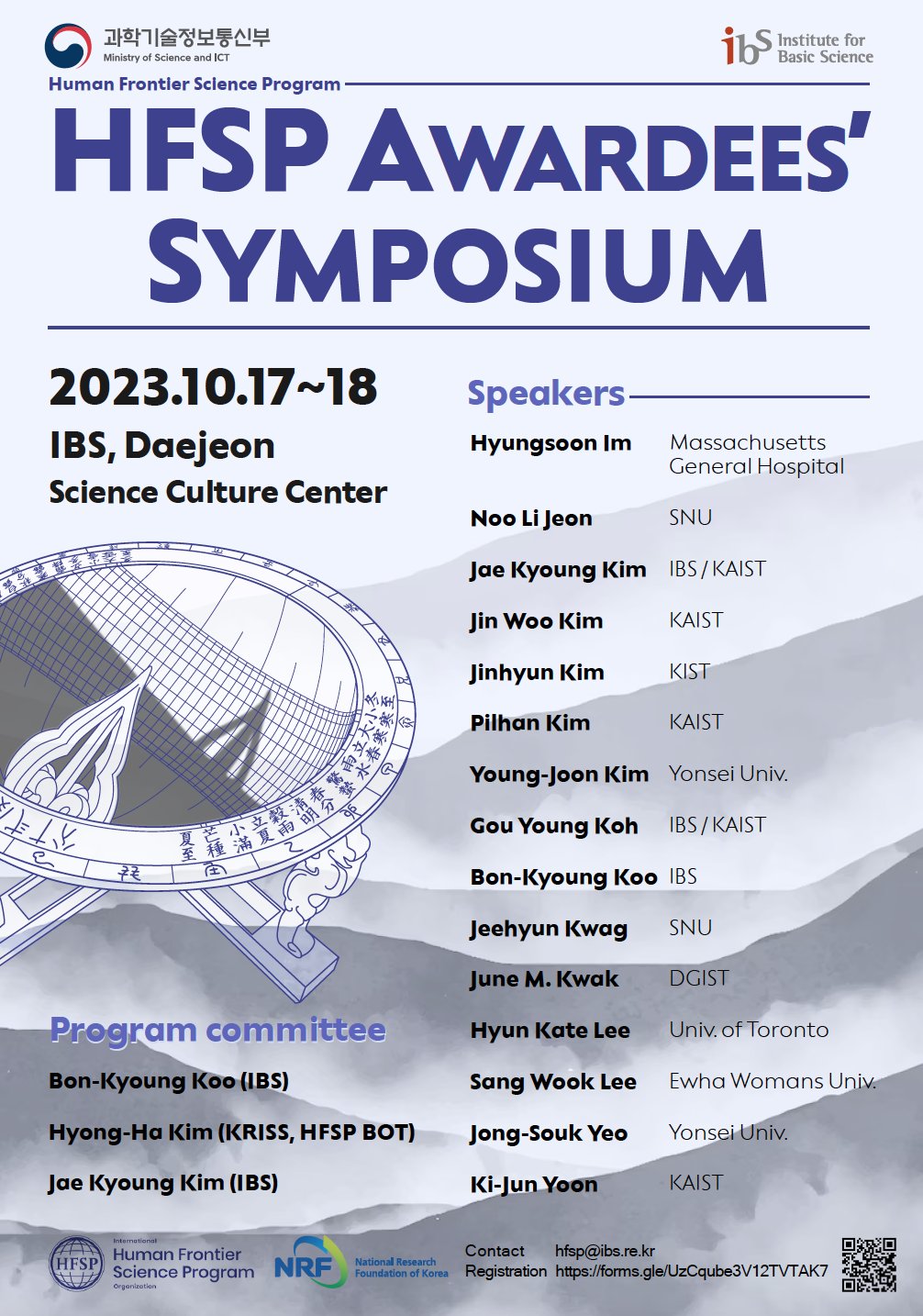-
-
-

Sebastian Walcher, Reaction networks: Reduction of dimension and critical parameters
ZOOM ID: 997 8258 4700 (Biomedical Mathematics Online Colloquium) (pw: 1234)Abstract: Typically, the mathematical description of reaction networks involves a system of parameter-dependent ordinary differential equations. Generally, one is interested in the qualitative and quantitative behavior of solutions in various parameter regions. In applications, identifying the reaction parameters is a fundamental task. Reduction of dimension is desirable from a practical perspective, and even necessary when …
-
Yun Min Song, A data-driven approach for timescale decomposition of biochemical reaction networks
B378 Seminar room, IBS 55 Expo-ro Yuseong-gu, Daejeon, Korea, Republic ofWe will discuss about “A data-driven approach for timescale decomposition of biochemical reaction networks”, Amir Akbari, Zachary B. Haiman, Bernhard O. Palsson, bioRxiv (2023) Abstract Understanding the dynamics of biological systems in evolving environments is a challenge due to their scale and complexity. Here, we present a computational framework for timescale decomposition of biochemical reaction …
-
Jonathan Rubin, Qualitative inverse problems: mapping from limited data to properties of dynamics and parameter values for ODE models
B378 Seminar room, IBS 55 Expo-ro Yuseong-gu, Daejeon, Korea, Republic of -
-
Olive Cawiding, Power spectral estimate for discrete data
B378 Seminar room, IBS 55 Expo-ro Yuseong-gu, Daejeon, Korea, Republic ofWe will discuss about “Power spectral estimate for discrete data”, Nobert Marwan and Tobias Braun, Chaos (2023). Abstract The identification of cycles in periodic signals is a ubiquitous problem in time series analysis. Many real-world datasets only record a signal as a series of discrete events or symbols. In some cases, only a sequence …
-

Human Frontier Science Program Awardees’ Symposium
IBS 55 Expo-ro Yuseong-gu, Daejeon, Daejeon, Korea, Republic of -

Tetsuya J. Kobayashi, Optimality of Biological Information Processing
ZOOM ID: 997 8258 4700 (Biomedical Mathematics Online Colloquium) (pw: 1234)Abstract: Almost all biological systems possess the ability to gather environmental information and modulate their behaviors to adaptively respond to changing environments. While animals excel at sensing odors, even simple bacteria can detect faint chemicals using stochastic receptors. They then navigate towards or away from the chemical source by processing this sensed information through intracellular …
-
Hyeontae Jo, AutoScore:A Machine Learning–Based Automatic Clinical Score Generator and Its Application to Mortality Prediction Using Electronic Health Records
B378 Seminar room, IBS 55 Expo-ro Yuseong-gu, Daejeon, Korea, Republic ofWe will discuss about "AutoScore:A Machine Learning–Based Automatic Clinical Score Generator and Its Application to Mortality Prediction Using Electronic Health Records", Xie, Feng, et al., JMIR medical informatics 8.10 (2020): e21798. Abstract Background: Risk scores can be useful in clinical risk stratification and accurate allocations of medical resources, helping health providers improve patient care. Point-based scores …
-
Hyun Kim, Significance analysis for clustering with single-cell RNA-sequencing data
We will discuss about “Significance analysis for clustering with single-cell RNA-sequencing data”, Grabski, Isabella N., Kelly Street, and Rafael A. Irizarry., Nature Methods (2023): 1-7. Abstract Unsupervised clustering of single-cell RNA-sequencing data enables the identification of distinct cell populations. However, the most widely used clustering algorithms are heuristic and do not formally account for statistical …
-
-

Eder Zavala, Quantitative analysis of high-resolution daily profiles of HPA axis hormones
ZOOM ID: 997 8258 4700 (Biomedical Mathematics Online Colloquium) (pw: 1234)Abstract: The Hypothalamic-Pituitary-Adrenal (HPA) axis is the key regulatory pathway responsible for maintaining homeostasis under conditions of real or perceived stress. Endocrine responses to stressors are mediated by adrenocorticotrophic hormone (ACTH) and corticosteroid (CORT) hormones. In healthy, non-stressed conditions, ACTH and CORT exhibit highly correlated ultradian pulsatility with an amplitude modulated by circadian processes. Disruption …
-

Matthew Simpson, Efficient prediction, estimation and identifiability analysis with mechanistic mathematical models
ZOOM ID: 997 8258 4700 (Biomedical Mathematics Online Colloquium) (pw: 1234)Abstract: Interpreting data using mechanistic mathematical models provides a foundation for discovery and decision-making in all areas of science and engineering. Key steps in using mechanistic mathematical models to interpret data include: (i) identifiability analysis; (ii) parameter estimation; and (iii) model prediction. Here we present a systematic, computationally efficient likelihood-based workflow that addresses all three …
-
Seokjoo Chae, Uncertainty quantified discovery of chemical reaction systems via Bayesian scientific machine learning
B378 Seminar room, IBS 55 Expo-ro Yuseong-gu, Daejeon, Korea, Republic ofWe will discuss about "Uncertainty quantified discovery of chemical reaction systems via Bayesian scientific machine learning." bioRxiv (2023): 2023-09. Abstract The recently proposed Chemical Reaction Neural Network (CRNN) discovers chemical reaction pathways from time resolved species concentration data in a deterministic manner. Since the weights and biases of a CRNN are physically interpretable, the …
12 events found.

